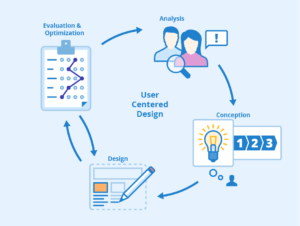Infusing Joy into Vaccination with Virtual Reality and Physical Exercise – Transforming ICU Rehabilitation
Introduction
The world of medical technology is evolving at an unprecedented pace, transforming the way we approach patient care and recovery. In a groundbreaking development, ICU patients undergoing incubation are now experiencing a new level of recovery through a combination of virtual reality (VR) and physical exercise. This innovative approach not only enhances the patient’s mental well-being but also contributes to their physical rehabilitation. In this blog, we delve into this cutting-edge technique that is redefining patient experiences within intensive care units.
Reimagining ICU Recovery with Virtual Reality
Being confined to an ICU incubator can be an isolating experience for patients, with limited interactions and minimal exposure to the outside world. To address this, healthcare professionals are harnessing the power of virtual reality to transport patients beyond the confines of their hospital room. By wearing VR headsets, patients can immerse themselves in virtual environments that take them on serene journeys, provide entertainment, and even create a sense of adventure.
A Joyful Vaccination Experience
A notable application of VR technology in the ICU is during vaccination procedures. For patients, especially those with an already compromised immune system, vaccinations are a crucial step toward recovery. However, the process can be anxiety-inducing and uncomfortable. By integrating VR, patients can undergo a simulated, pleasant environment while receiving their vaccination. This distraction technique not only eases anxiety but also allows patients to associate the procedure with a positive experience.
Synergy with Physical Exercise
The benefits of VR extend beyond mental well-being. Integrating physical exercise with VR experiences can significantly contribute to a patient’s overall rehabilitation process. Encouraging patients to engage in controlled physical activities while immersed in a stimulating virtual environment can aid in muscle strength, coordination, and joint mobility. This synergy between VR and exercise creates a holistic approach to recovery, addressing both the mental and physical aspects of healing.
Harnessing the Potential of Imagination
Virtual reality has the remarkable ability to engage the power of imagination. For ICU patients who might be limited in their physical mobility, VR provides an avenue to explore new horizons and engage in activities that were once off-limits. Whether it’s strolling along a tranquil beach, hiking through a lush forest, or even virtually attending events, patients can escape their physical confines and experience moments of freedom and joy.
The Healing Potential of Positive Distraction
The concept of positive distraction is central to the success of VR integration in ICU settings. By redirecting a patient’s focus from pain, discomfort, or stress to an engaging and enjoyable virtual environment, healthcare professionals can create a more positive emotional state. This not only enhances the patient’s mood but also has potential therapeutic effects on pain perception and stress levels.
The Role of Healthcare Professionals
The successful implementation of VR-assisted recovery in ICUs requires a multidisciplinary approach. Healthcare professionals, including doctors, nurses, and physiotherapists, play a pivotal role in tailoring VR experiences to individual patient needs. Patient preferences, medical conditions, and recovery goals must be considered to ensure that the virtual environments are safe, appropriate, and effective.
Overcoming Challenges
While the integration of VR and physical exercise in ICU recovery holds immense promise, there are challenges to overcome. Ensuring patient safety, minimizing motion sickness during VR experiences, and addressing potential technical glitches are critical considerations. Moreover, it’s essential to strike a balance between the virtual and physical aspects of recovery to prevent patients from overexerting themselves.
A Glimpse into the Future of ICU Recovery
As technology continues to advance, the possibilities for enhancing ICU patient recovery are vast. The combination of virtual reality and physical exercise is just one example of how innovation can reshape patient experiences. The integration of biofeedback mechanisms, personalized treatment plans, and AI-driven monitoring could further revolutionize the way patients recover in the ICU.
Conclusion: A New Horizon of Healing
The convergence of virtual reality and physical exercise within ICU recovery is a testament to human creativity and the power of innovation. By providing patients with immersive and joyful experiences, healthcare professionals are not only promoting mental well-being but also contributing to their physical rehabilitation. As this pioneering approach gains momentum, it opens the door to a future where patient recovery is guided by technology that nurtures the mind, body, and spirit, transforming the ICU into a place of healing, hope, and possibility.
For More Related Articles Browse Our Website Blogster.pk
For social Connection You can also Visit and follow our Social media Platforms
Facebook , Instagram, Linkedin, Pinterest, Quora, Twitter, Youtube.








